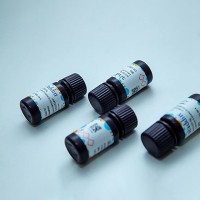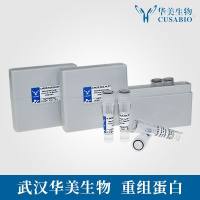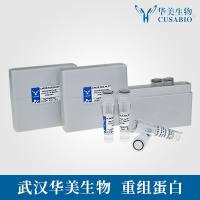Uridine 2′‐Carbamates: Facile Tools for Oligonucleotide 2′‐Functionalization
互联网
- Abstract
- Table of Contents
- Materials
- Figures
- Literature Cited
Abstract
A facile method for preparation of uridine 2??carbamate derivatives based on reaction of 3?,5??disilyl?protected uridine with 1,1??carbonyldiimidazole followed by treatment with an aliphatic amine is presented. A phosphoramidite monomer suitable for automated oligonucleotide synthesis is obtained in a few steps. The compounds are useful for the introduction of various labels and modifications into an oligonucleotide chain. Although 2??carbamate modification is somewhat destabilizing for DNA?DNA and DNA?RNA duplexes, it is suitable for the direction of ligands into the minor groove of duplexes or at non?base?paired sites (e.g., loops and bulges) of oligonucleotides. Pyrene?modified oligonucleotide 2??carbamates show a considerable increase in fluorescence intensity upon hybridization to a complementary RNA (but not DNA).
Keywords: nucleoside; uridine carbamate; oligonucleotide modification; duplex stability; pyrene; fluorescence
Table of Contents
- Basic Protocol 1: Preparation of Uridine 2′‐Carbamate Phosphoramidites from Primary and Secondary Amines
- Alternate Protocol 1: Preparation of Uridine 2′‐Carbamate Phosphoramidites from Primary Amines that Require Additional Side‐Chain Protection
- Basic Protocol 2: Synthesis, Isolation, and Characterization of Oligonucleotides Containing Uridine 2′‐Carbamates
- Commentary
- Literature Cited
- Figures
- Tables
Materials
Basic Protocol 1: Preparation of Uridine 2′‐Carbamate Phosphoramidites from Primary and Secondary Amines
Materials
Alternate Protocol 1: Preparation of Uridine 2′‐Carbamate Phosphoramidites from Primary Amines that Require Additional Side‐Chain Protection
Basic Protocol 2: Synthesis, Isolation, and Characterization of Oligonucleotides Containing Uridine 2′‐Carbamates
Materials
|
Figures
-
Figure 4.21.1 General scheme for conversion of uridine into 2′‐carbamate 3′‐phosphoramidites (see ). For R and R1 groups, see Figure . View Image -
Figure 4.21.2 Side‐chain substituents of uridine 2′‐carbamates. R2 stands for the rest of the molecule; see Figures and . View Image -
Figure 4.21.3 Preparation of side‐chain‐protected 3′,5′‐ O ‐silylated uridine 2′‐carbamates (see ). View Image -
Figure 4.21.4 MALDI‐TOF mass spectra of 2′‐carbamate oligodeoxyribonucleotides containing two modified uridines CundefinedCCCAGGCundefinedCAAAT, where undefined is from phosphoramidites S.7d (A) , S.7e (B ), and S.7h (C ) (see Figures and and Table ). View Image -
Figure 4.21.5 Fluorescence spectra of 2′‐pyrene carbamate oligodeoxyribonucleotide CTCCCAGGCundefinedCAAAT (1) and its duplex with complementary DNA (2) and RNA (3) (see Table ). View Image
Videos
Literature Cited
| Literature Cited | |
| Caruthers, M.H., Barone, A.D., Beaucage, S.L., Dodds, D.R., Fisher, E.F., McBride, L.J., Matteucci, M., Stabinsky, Z., and Tang J.‐Y. 1987. Chemical synthesis of deoxyoligonucleotides by the phosphoramidite method. Methods Enzymol. 154:287‐313. | |
| Dubey, I., Pratviel, G., and Meunier, B. 2000. Synthesis and DNA cleavage of 2′‐O‐amino‐linked metalloporphyrin‐oligonucleotide conjugates. J. Chem. Soc., Perkin Trans. 1:3088‐3095. | |
| Freier, S.M. and Altmann, K.‐H. 1997. The ups and downs of nucleic acid duplex stability: Structure‐stability studies on chemically‐modified DNA:RNA duplexes. Nucl. Acids Res. 25:4429‐4443. | |
| Korshun, V.A., Stetsenko, D.A., and Gait, M.J. 2002. Novel uridin‐2′‐yl carbamates: Synthesis, incorporation into oligodeoxyribonucleotides, and remarkable fluorescence properties of 2′‐pyren‐1‐ylmethylcarbamate. J. Chem. Soc., Perkin Trans. 1:1092‐1104. | |
| McGee, D.P.C., Sebesta D.P., O'Rourke, S.S., Martinez, R.L., Jung, M.E., and Pieken, W.A. 1996. Novel nucleosides via intramolecular functionalization of 2,2′‐anhydrouridine derivatives. Tetrahedron Lett. 37:1995‐1998. | |
| Prhavc, M., Lesnik, E.A., Mohan, V., and Manoharan, M. 2001. 2′‐O‐Carbamate‐containing oligonucleotides: Synthesis and properties. Tetrahedron Lett. 42:8777‐8780. | |
| Rannard, S.P. and Davis, N.P. 2000. The selective reaction of primary amines with carbonyl imidazole containing compounds: Selective amide and carbamate synthesis. Org. Lett. 2:2117‐2120. | |
| Seio, K., Wada, T., Sakamoto, K., Yokoyama, S., and Sekine, M. 1998. Chemical synthesis and properties of conformationally fixed diuridine monophosphates as building blocks of the RNA turn motif. J. Org. Chem. 63:1429‐1443. | |
| Silverman, S.K. and Cech, T.R. 1999. RNA tertiary folding monitored by fluorescence of covalently attached pyrene. Biochemistry 38:14224‐14237. | |
| Sproat, B.S. and Brown, D.M. 1985. A new linkage for solid phase synthesis of oligodeoxyribonucleotides. Nucl. Acids Res. 13:2979‐2987. | |
| Stolze, K., Holmes, S.C., Earnshow, D.J., Singh, M., Stetsenko, D.A., Williams, D., and Gait, M.J. 2001. Novel spermine‐amino acid conjugates and basic tripeptides enhance cleavage of the hairpin ribozyme at low magnesium ion concentration. Bioorg. Med. Chem. Lett. 11:3007‐3010. | |
| Wachter, A., Jablonski, J.‐A., and Ramachandran, K.L. 1986. A simple and efficient procedure for the synthesis of 5′‐aminoalkyl oligodeoxynucleotides. Nucl. Acids Res. 14:7985‐7994. | |
| Yamana, K., Zako, H., Asazuma, K., Iwase, R., Nakano, H., and Murakami, A. 2001. Fluorescence detection of specific RNA sequences using 2′‐pyrene‐modified oligoribonucleotides. Angew. Chem. Int. Ed. Engl. 40:1104‐1106. | |
| Zatsepin, T.S., Stetsenko, D.A., Arzumanov, A.A., Romanova, E.A., Gait, M.J., and Oretskaya, T.S. 2002. Synthesis of peptide‐oligonucleotide conjugates with single and multiple peptides attached to 2′‐aldehyde through thiazolidine, oxime and hydrazine linkages. Bioconjug. Chem. 13:822‐830. | |
| Zhang, L., Cui, Z., and Zhang, B. 2003. An efficient synthesis of 3′‐amino‐3′‐deoxyguanosine from guanosine. Helv. Chim. Acta 86:703‐710. |







